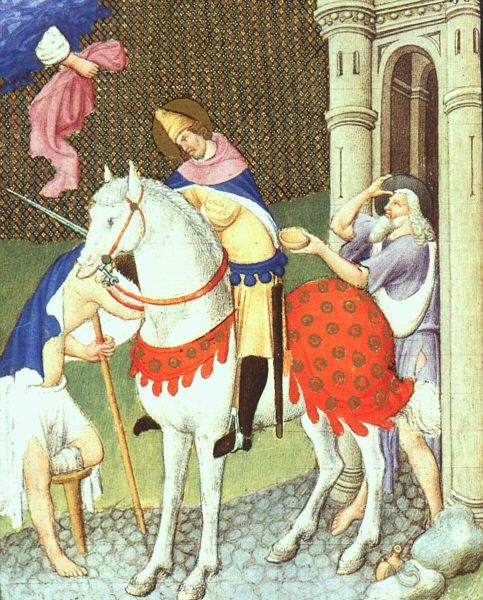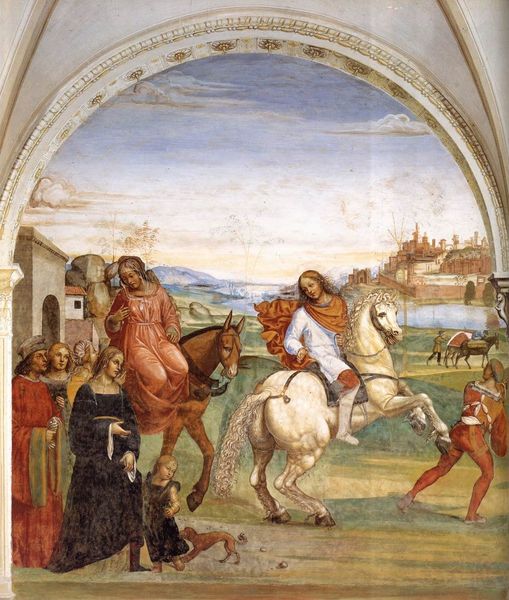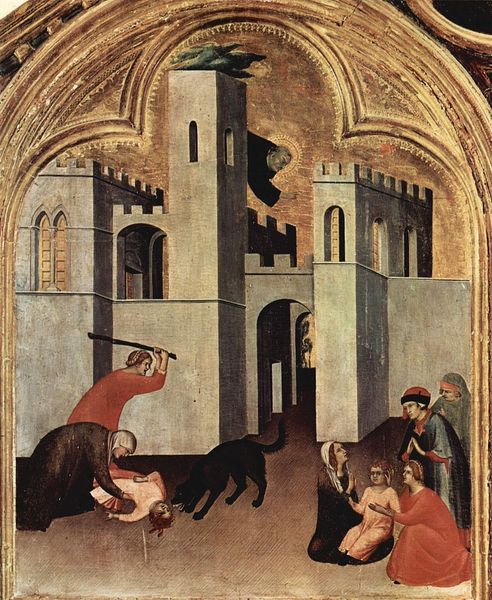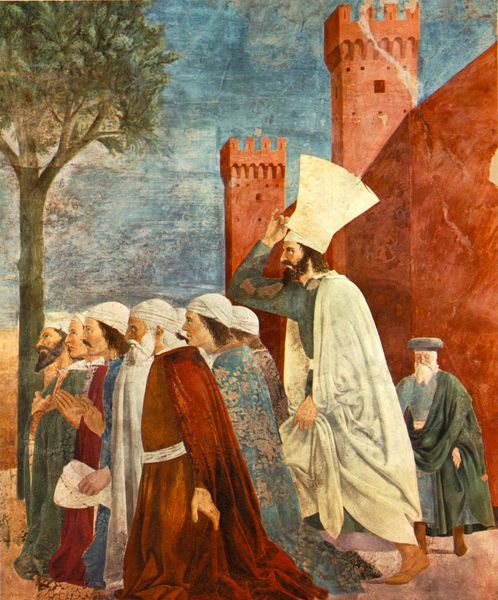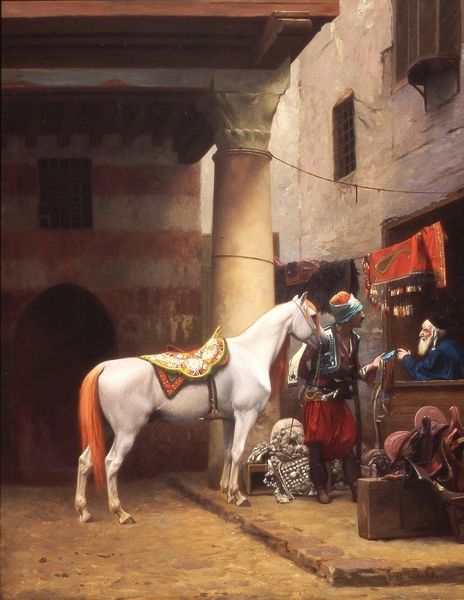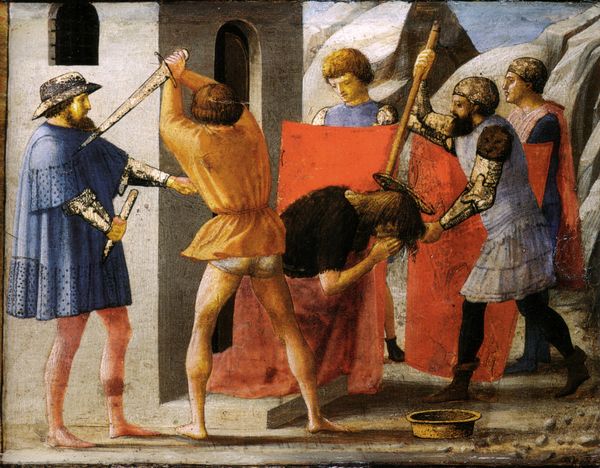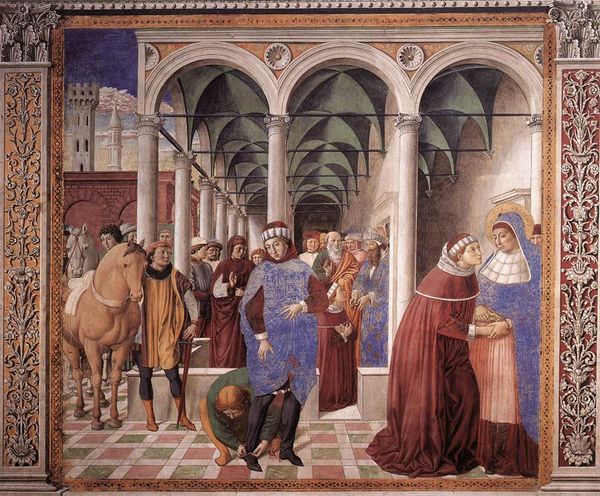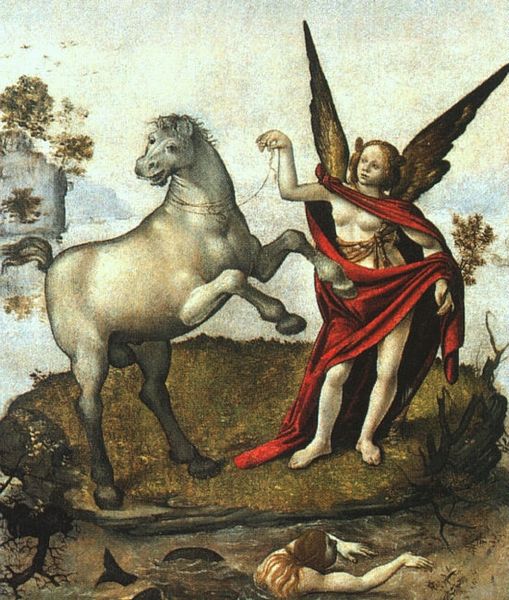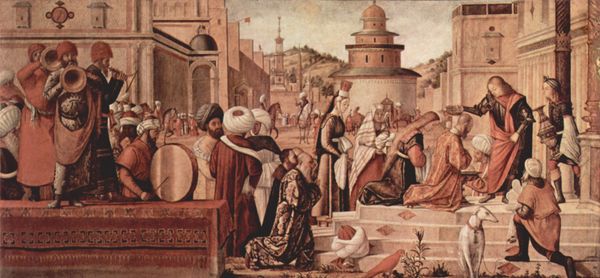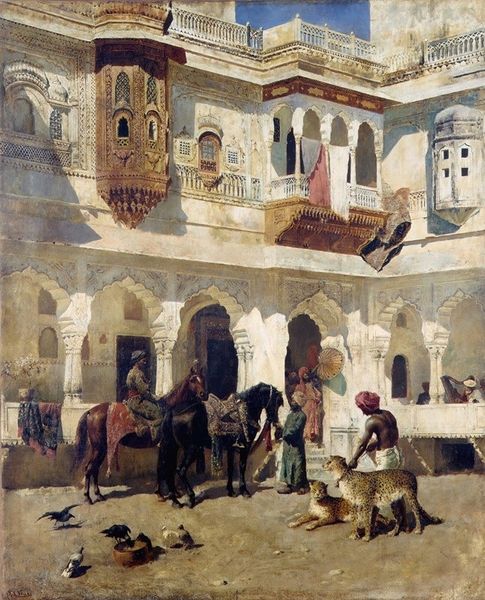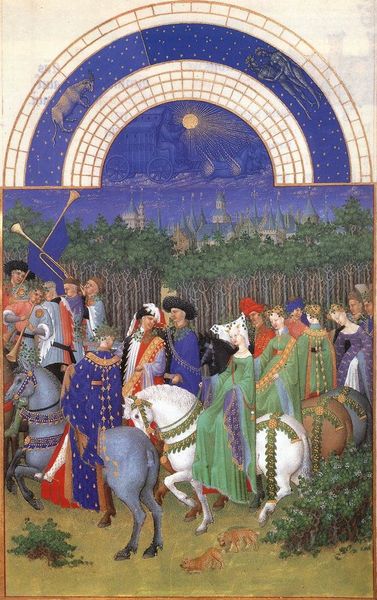
tempera, painting, oil-paint
#
gouache
#
narrative-art
#
tempera
#
painting
#
oil-paint
#
painted
#
figuration
#
oil painting
#
underpainting
#
christianity
#
history-painting
#
academic-art
#
italian-renaissance
#
early-renaissance
#
watercolor
#
realism
Dimensions: 48.3 x 43.2 cm
Copyright: Public domain
Curator: This tempera and oil painting is entitled “The Triumph of Mordecai, from The Story of Esther.” It was created around 1480 by Sandro Botticelli. Editor: What strikes me first is the pared-down palette. That restrained range creates a rather ethereal mood. It's both stately and somehow fragile. Curator: The painting depicts a scene from the Book of Esther, where Mordecai is honored for revealing a plot to assassinate King Ahasuerus. You see King Ahasuerus, the bearded fellow on horseback, following the instruction from Esther by parading Mordecai through the city. Editor: It's such a direct visual translation. This is before everyone was being all meta! There's an incredible sincerity to it. That humble Mordecai being led feels…almost embarrassed. I imagine Renaissance audiences found a different kind of humor here? Curator: It is a complex cultural landscape they’re navigating, I’m sure. The symbolic resonance of a Jew being honored in such a way would've had enormous meaning. Mordecai being dressed in royal robes on the King’s horse is an echo of power, honor and dignity transferred temporarily to this Jewish figure. In that period the message would have carried the potential for dialogue across lines of division. Editor: I see a bit of a dance between earthly and heavenly power. It is striking how stark those architectural elements are too—all right angles and planar surfaces. The buildings don’t look much like Jerusalem, do they? Curator: No, but think about the context; Florence, 1480. Botticelli is adapting the visual vernacular familiar to his patrons, merging biblical narrative with the present realities they could see right outside their windows. The horse is rather remarkable, I think, given that Botticelli was far more fascinated with the human form than animal anatomy. The horse symbolizes triumph in and of itself and nobility being literally carried forward on the strength of one's convictions. Editor: Exactly, I see so much subtle drama woven through simple storytelling, almost like a beautifully illustrated parable that leaves so much room for introspection, I’m finding new threads of narrative and symbol with each encounter. Curator: Agreed, it's a painting where close observation reveals a deeper connection to historical and psychological currents.
Comments
No comments
Be the first to comment and join the conversation on the ultimate creative platform.
